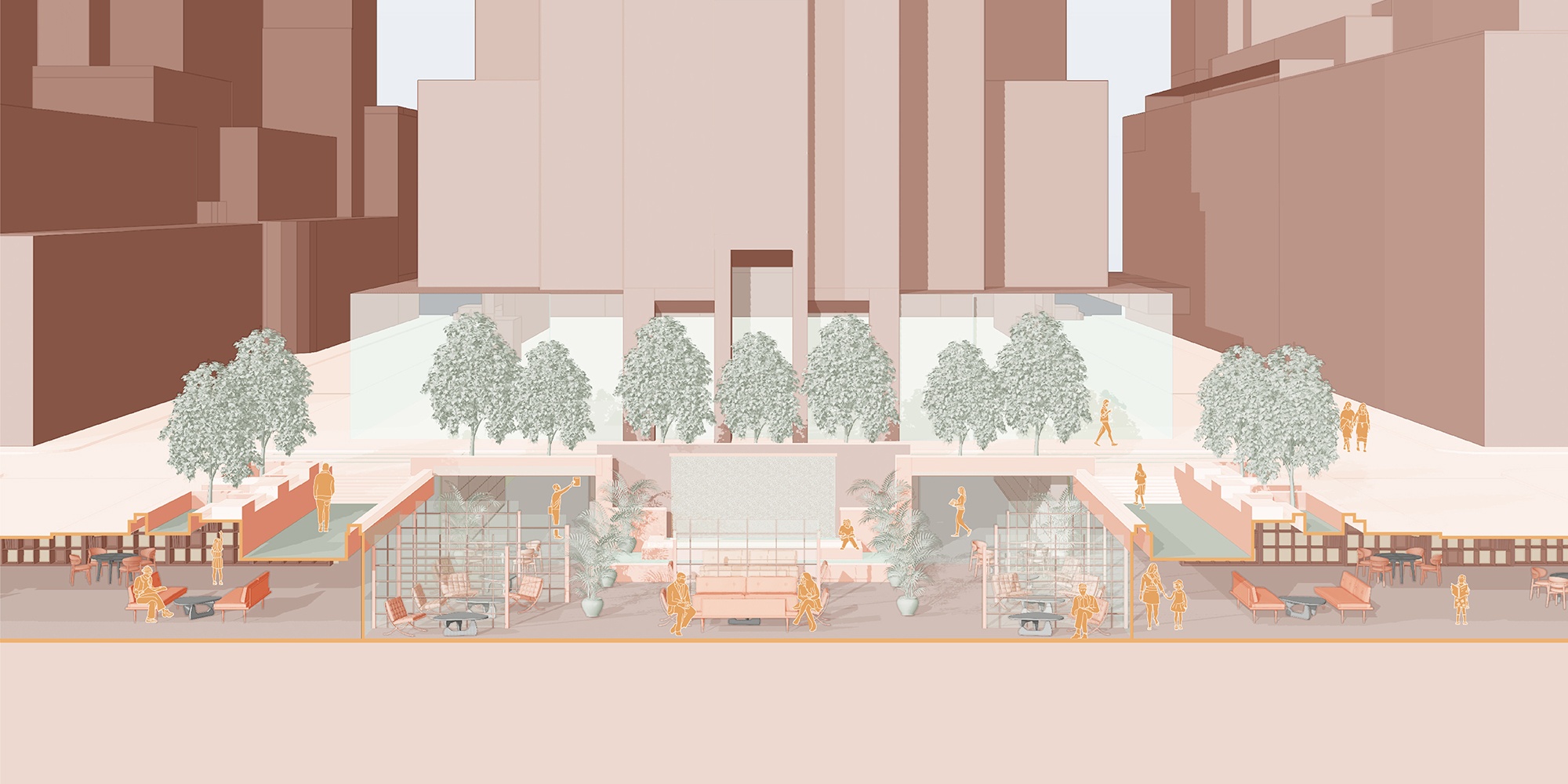Historic preservation has typically privileged the stories and the spaces of wealthy white men. Many designated landmarks represent a stronghold of social, racial, and economic exclusivity—pointing towards a need to reassess the ways in which institutions circumscribe and define public space.
Through a study of accessibility and exclusion; transparency and opacity; light and shadow; we might better understand how social divisions are enforced and how they could be dismantled.
The proposed interventions at each site seek to re-define the spatial voids that they inhabit to find new conditions of habitation.
At Columbus Circle this is done through a strategy of unraveling. The site becomes a space of observation as the structure spirals upwards to allow for elevated views previously reserved for the monument that once stood there.
The intervention at Rockefeller Center employs a strategy of excavation. The site becomes a space for knowledge and community resources as the grounds are reclaimed to carve out space for a public library.
The Flatiron intervention explores both strategies of excavation and elevation, becoming a space for reflection where the beloved building lends itself as a palate for the interior, not only looming above, but also reflected below.
The strategies proposed are intended to reach beyond the scope of this project as a toolkit that might help us better understand the conditions that space establishes and expand the ways we think of public spaces in our city to enable different types of public programming in response to different urban conditions. “








